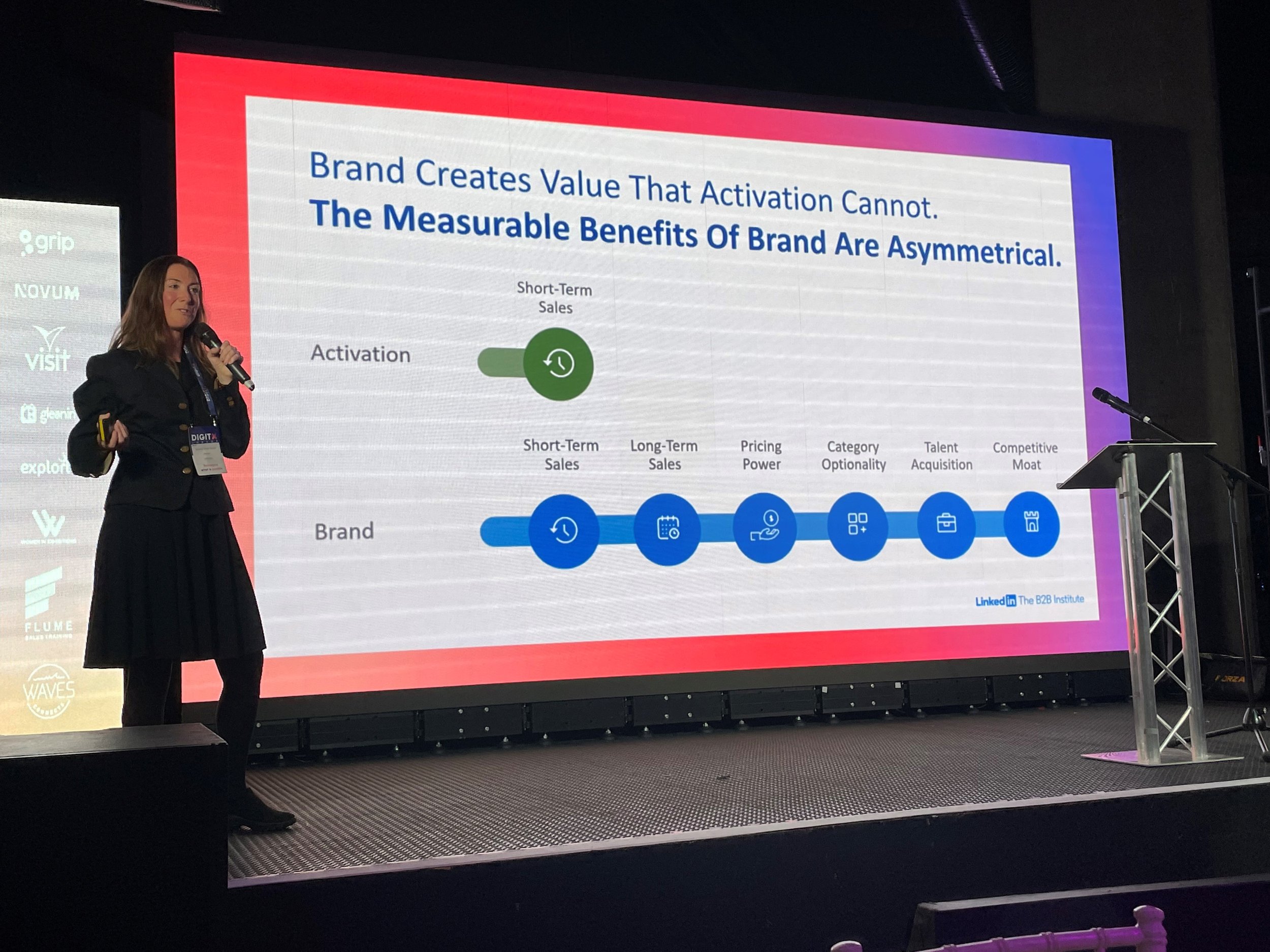Event marketing & Linkedin - DigitX London
Insights from Jennifer Shaw-Sweet
LinkedIn - it's a vast, intricate maze of professional networks, job opportunities, thought leadership, and more. It's an enigma that everyone seems to be trying to decode.
Sorry to burst your bubble, but I don't have the magic formula either.
What I do have, however, is a few insights from an enlightening session led by Jennifer Shaw-Sweet at DigitXLondon by Tag Digital.
Jennifer's magnetic persona on stage was hard to ignore, but it wasn't just her charisma that held the audience captive - her content was equally compelling and thought-provoking. She gave us a sneak peek into the world of the CMO Scorecard, a topic she often covers in her talks, but I'll let you explore that in one of her sessions - I can't give everything away for free (but I can give a teeny tiny insight at the end of this blog).
Here, I want to share with you some nuggets of wisdom that resonated with me.
In-market and out-of-market buyers
Jennifer broke down your buyers into two categories: in-market buyers and out-of-market buyers.
The in-market buyers, those who are currently buying from you, make up typically about 5% of your potential market. That leaves a whopping 95% of out-of-market buyers - customers who aren't purchasing from you yet but represent your potential market.
This perspective is a game-changer.
It shifts the focus from simply nurturing existing customers to tapping into the vast ocean of potential customers, thus opening up new avenues for growth. How do you do that?
Well, that's a whole other blog.
The toilet roll of behaviour
This intriguing concept refers to observing and understanding consumer behaviour patterns.
Like a roll of toilet paper, consumer behaviour unfolds in a continuous, predictable sequence. By studying these patterns; how people interact, how they buy etc., marketers can anticipate needs, tailor their offerings, and ultimately drive business outcomes.
I hadn't made tonnes of notes about the Toilet Roll of Behaviour, sorry Jennfier, but I do have an amusing picture of the slide you shared and well, my notes say "Toilet Roll of behaviour...hahahaha" so... the rest of that this my interpretation.
Sorry folks - you'll just have to attend future Tag events!
Marketing inputs into business outcomes
Marketing isn't just about crafting catchy slogans or designing eye-catching ads. It's something my old chief of colouring-in Christine used to say a lot - and still does!
It's about driving tangible business outcomes.
Every marketing input, from social media posts to email campaigns, should be strategically designed to influence consumer behaviour and contribute to the overall business objectives.
Well, not every - sometimes it's good to do random things for fun - people like your personality - but your brand needs to stay somewhat true to its original colours!
Long term marketing
I saw a lot of heads nod to this part of Jennifer's talk.
An advertising campaign that spans over 12 months can effectively facilitate the growth of a brand from small to many, given its continuous and targeted nature.
Many event marketers said (in following sessions) that they struggle trying to prove drip feed campaigns therefore its often cut from their budgets. ouch. That's potentially nine months of interaction that isn't realized.
A year-round marketing initiative is designed to permeate the market slowly, but steadily, with consistent messaging and branding.
It's not about immediate results, and that's clearly an issue for event marketers, but about long-term growth and establishing a strong presence in the market.
The campaign could involve a mix of different types of advertisements, from digital ads and social media promotions to traditional print ads and of course content, all unified by a common theme or message that resonates with the brand's target audience.
This long-term marketing approach, coupled with a year-long advert campaign, can solidify a brand's position in the market and set the stage for sustainable growth.
The CMO Scorecard: Evaluating creative media outcomes
The CMO Scorecard is a tool designed to quantify the impact of creative efforts, assess ROI, and evaluate the quality of your investments.
It focuses on three components - Creative, Media, and Outcomes. 'Creative' measures the effectiveness of your strategies, 'Media' evaluates your media plans, and 'Outcomes' track tangible results such as leads or sales.
The value of the CMO Scorecard lies not just in measuring output and ROI, but in assessing how well your creative resonates with the right audience.
It's designed for continuous monitoring, providing regular updates on your performance, thus enabling consistent tracking and improvement of your marketing strategies month after month. In essence, it bridges the gap between creative ideas and tangible business results.
Who doesn't want that?
LinkedIn: the reliability of data
One of the key takeaways from Jennifer's session was the reliability of data on LinkedIn.
It's a platform where users willingly share professional information and keep it updated, making it a goldmine for marketers as this human-input data offers a level of accuracy that's hard to find elsewhere, making LinkedIn a powerful tool for targeting, personalization, and engagement.
Decoding LinkedIn may seem like a daunting task, but watching sessions like these from experts like Jennifer Shaw-Sweet, we move another step closer to understanding its potential.
Remember, LinkedIn is more than just a professional networking site - it's a window into the minds of your potential customers.
I hope you've been enjoying these summaries of sessions at Tag's DigitXLondon event - One more blog to go... and this one is an eye opener... stay tuned - subscribe.

